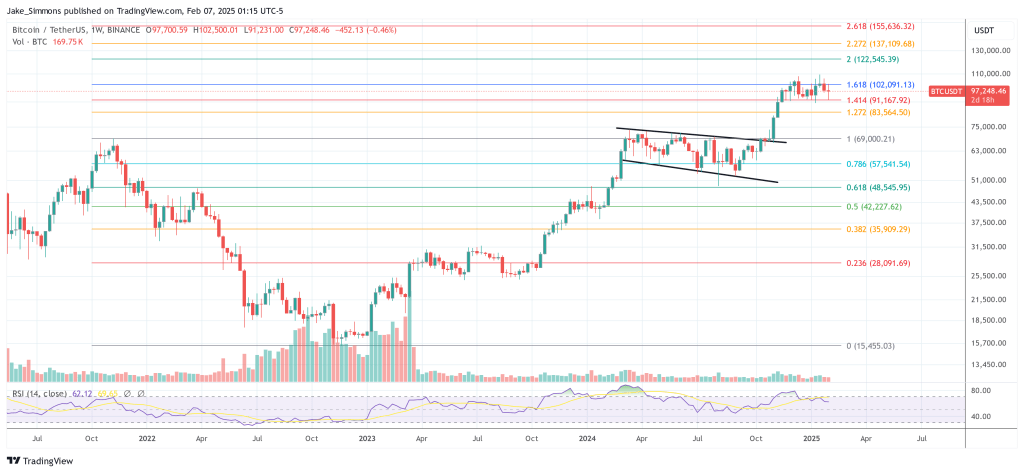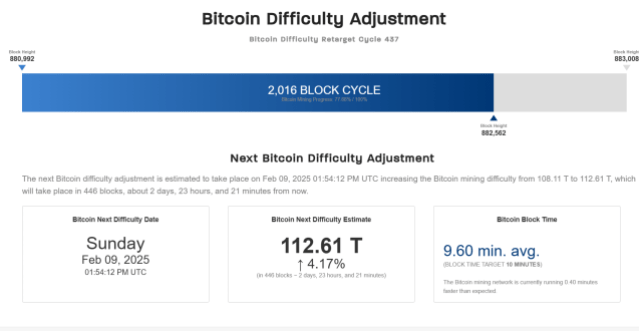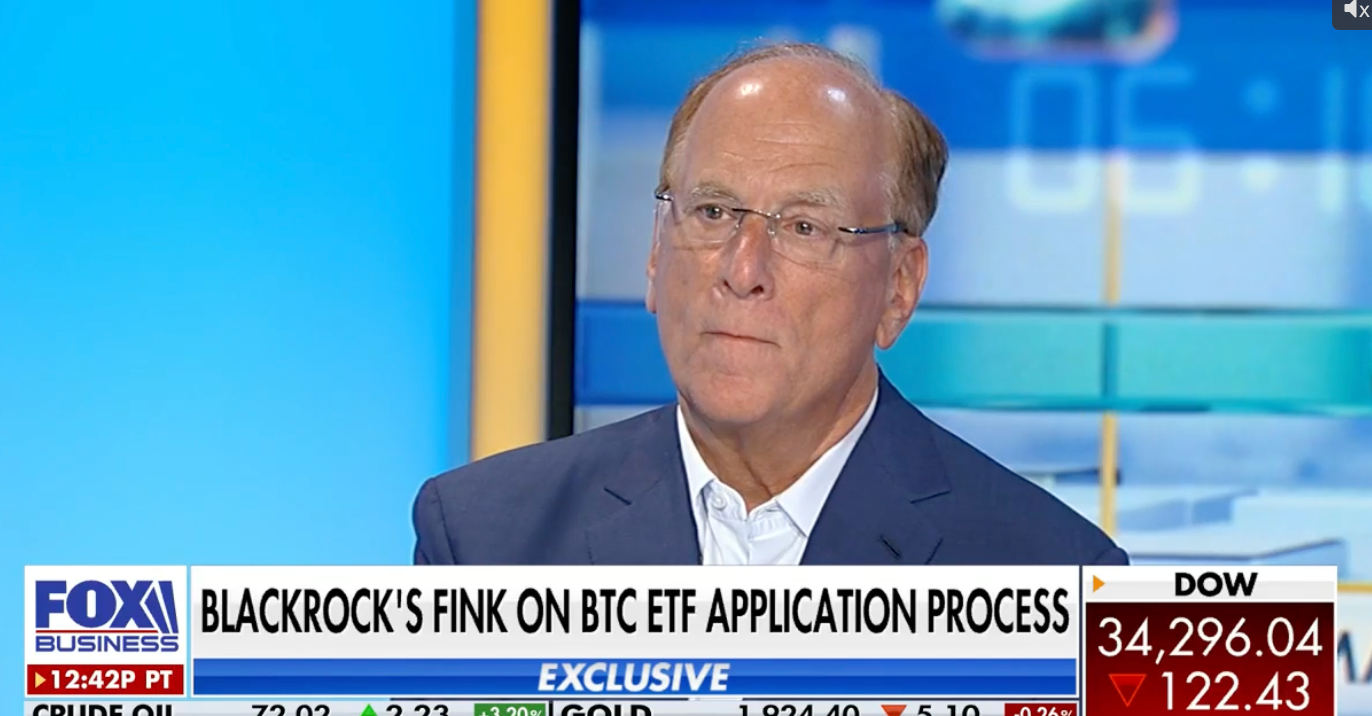The cryptocurrency landscape is evolving rapidly as institutional investors, state governments, and global regulators make significant strides in digital asset adoption. The latest developments highlight the growing role of Bitcoin in state treasuries, the increasing influence of institutional players in the crypto market, and the push for Web3 expansion in key financial hubs like Hong Kong. From BlackRock increasing its stake in Bitcoin-focused firms to U.S. states exploring Bitcoin reserves, these shifts signal a maturing market with long-term implications. Meanwhile, Brazil’s dominance in stablecoin transactions. As crypto continues its march toward mainstream integration, regulatory frameworks, institutional investments, and macroeconomic trends will play crucial roles in shaping its future.
1. Utah Advances Bitcoin Reserve Legislation
Utah is taking a pioneering step by advancing a bill to create a Bitcoin reserve for the state. The “Strategic Bitcoin Reserve” bill (HB230), introduced by Representative Jordan Teuscher, has successfully passed in the House of Representatives and is now moving to the Senate for further consideration. If approved, the state treasurer would be authorized to allocate up to 5% of certain public funds into “qualifying digital assets,” including Bitcoin, other high-capacity cryptocurrencies, and stablecoins. This initiative is part of a broader trend among U.S. states exploring digital asset integration into public financial strategies.
The House Economic Development Committee supported the bill with an 8-1 vote, reflecting strong backing from legislators. If the Senate approves the bill, it will proceed to Governor Spencer Cox for final review. Prominent Bitcoin advocate Dennis Porter expressed optimism that Utah could set a precedent for other states by passing this groundbreaking legislation. The growing interest from states like Arizona and New Mexico in similar Bitcoin reserve bills suggests an increasing recognition of Bitcoin’s role in state treasury management.
This development is significant as it showcases a shift in how U.S. states perceive Bitcoin—not just as a speculative asset but as a potential hedge against inflation and an alternative to traditional reserve holdings. If Utah successfully enacts this law, it may pave the way for other states to follow suit, reinforcing Bitcoin’s legitimacy in state-level financial planning. However, regulatory challenges and implementation concerns remain critical factors to watch as the bill progresses.
Impact Assessment:
✔️ Positive for Bitcoin adoption: More state reserves in Bitcoin could bolster institutional confidence.
⚠️ Regulatory scrutiny expected: The federal response will be crucial in shaping future adoption.
📈 Market sentiment boost: Could influence other states to consider similar initiatives.
2. Bitcoin Mining Difficulty Set to Increase by 4% Amid Hashrate Surge
Bitcoin’s mining difficulty is expected to rise by 4% in the next adjustment, scheduled for February 9, 2025. This change comes as the network’s hashrate has reached record highs, indicating an influx of computational power dedicated to mining. The difficulty adjustment mechanism ensures Bitcoin’s block production remains consistent at approximately 10-minute intervals despite fluctuations in mining power.
This increase in difficulty directly impacts miners, as they must expend more computational resources to maintain profitability. Some mining firms, such as Marathon Digital Holdings, reported a decline in Bitcoin production due to escalating difficulty levels. However, others, like Riot Platforms, have managed to increase their production efficiency, demonstrating how strategic mining operations can navigate the shifting landscape.
The rising difficulty reflects a highly competitive mining environment, driven by advanced mining hardware and growing institutional interest. While this strengthens Bitcoin’s network security, it also raises concerns about smaller miners being pushed out due to increased operational costs. The upcoming Bitcoin halving event in April 2025, which will further reduce mining rewards, could intensify these challenges.
Impact Assessment:
✔️ Network security enhancement: Increased mining difficulty makes the Bitcoin network more resilient.
⚠️ Potential miner capitulation: Small-scale miners may struggle with higher costs.
📈 Mining industry consolidation: Larger firms could gain a greater market share.
3. Bitcoin Tops $100K and down After U.S. Jobs Data Misses Expectations
Bitcoin surged past the $100,000 milestone following weaker-than-expected U.S. job growth data. The U.S. economy added 143,000 jobs in January 2025, falling short of the projected 170,000, prompting speculation about potential shifts in Federal Reserve policy. This has fueled optimism among investors seeking alternative stores of value, particularly Bitcoin.
The labor report also showed a decline in the unemployment rate to 4% from 4.1%, along with an unexpected rise in average hourly earnings (0.5% vs. 0.3% forecasted). These mixed economic signals have heightened market uncertainty, leading to increased demand for Bitcoin as a hedge against potential macroeconomic risks. With the possibility of the Federal Reserve pausing or even reversing its rate hikes, liquidity could flow further into risk assets, benefiting Bitcoin.
Bitcoin’s price movement past $100K is a major psychological milestone and could attract further institutional interest. However, volatility remains a concern, as profit-taking and macroeconomic shifts could influence short-term price movements. The next Federal Reserve meeting and inflation reports will be key indicators of Bitcoin’s continued momentum.
Impact Assessment:
✔️ Bullish for Bitcoin: $100K milestone reinforces Bitcoin’s status as a macroeconomic hedge.
⚠️ Market volatility risk: Profit-taking at key resistance levels could lead to corrections.
📈 Institutional interest surge: The move above $100K may attract new institutional buyers.
4. Grayscale Transfers Over $360 Million in Bitcoin
Grayscale, a leading digital asset management firm, has transferred over $360 million worth of Bitcoin in a series of transactions. Blockchain data reveals multiple large transfers, with the largest single transaction involving 694.019 BTC (approximately $67.96 million). These transactions were spread across several addresses, raising speculation about Grayscale’s motives.
While Grayscale has not officially disclosed the purpose of these transfers, analysts suggest possibilities such as internal restructuring, rebalancing holdings, or preparations for upcoming financial products. The firm recently converted its Grayscale Bitcoin Trust (GBTC) into a spot Bitcoin ETF, which could be influencing its asset management strategies.
Large-scale Bitcoin transactions by institutional players often trigger market reactions. If these transfers indicate a liquidation or sell-off, Bitcoin’s price could face downward pressure. Conversely, if the transfers are for custodial restructuring or fund rebalancing, the market impact may be minimal. Investors are closely monitoring Grayscale’s actions for further clarity.
Impact Assessment:
⚠️ Unclear market impact: Potential sell-off concerns exist but lack confirmation.
✔️ Institutional rebalancing: Could indicate long-term confidence in Bitcoin.
📈 ETF-related restructuring: Possible adjustments due to the spot Bitcoin ETF launch.
5. Hong Kong Lawmakers Discuss Web3 Development in Budget Talks
Hong Kong’s government has announced a $50 million budget allocation to support Web3 development as part of its strategic push toward digital asset innovation. Financial Secretary Paul Chan outlined plans to host international seminars, encourage business collaborations, and develop educational initiatives aimed at fostering Web3 adoption.
In addition to financial support, Hong Kong is forming a dedicated task force on virtual asset development. This group will include members from policy bureaux, financial regulators, and market stakeholders to provide recommendations on responsible growth and regulation of the Web3 ecosystem. This initiative aligns with Hong Kong’s broader ambition to become a major global hub for blockchain and digital finance.
By integrating Web3 into its financial strategy, Hong Kong is positioning itself as a key player in the next phase of blockchain evolution. The city’s regulatory clarity and institutional support could attract major blockchain firms and Web3 startups. However, competition from other financial centers, along with potential regulatory adjustments, could influence the effectiveness of this initiative.
Impact Assessment:
✔️ Boost for Web3 adoption: Government funding supports industry growth.
⚠️ Regulatory challenges: Clear frameworks will be needed for sustainable development.
📈 Global competition: Hong Kong aims to compete with other crypto-friendly regions.
6. A Third of U.S. States Now Exploring Bitcoin and Crypto for Public Funds
A growing number of U.S. states are considering incorporating Bitcoin and cryptocurrencies into their public financial strategies. As of February 2025, 16 out of 50 states are actively exploring legislation that would allow state treasuries to allocate funds to Bitcoin or create dedicated crypto reserves. Utah, Arizona, Missouri, and Kentucky are among the leading states pushing forward such initiatives.
Utah’s “Strategic Bitcoin Reserve” bill (HB230) is advancing in the Senate, while Missouri’s HB1217 aims to establish a Bitcoin Strategic Reserve Fund. This legislation would enable state governments to use Bitcoin for select financial transactions, including taxes and fees. The growing interest from U.S. states indicates increasing recognition of Bitcoin as a long-term store of value, particularly as an inflation hedge.
This trend signifies a broader institutional shift toward digital assets, with Bitcoin gaining legitimacy as a financial instrument beyond speculative investments. However, these proposals may face federal regulatory challenges and concerns about price volatility. The success of these bills could set a precedent for nationwide adoption, further accelerating Bitcoin’s integration into mainstream finance.
Impact Assessment:
✔️ Positive for Bitcoin adoption: State-level interest strengthens Bitcoin’s credibility.
⚠️ Regulatory hurdles: Federal oversight could complicate implementation.
📈 Potential national trend: If passed, more states may follow suit.
7. Binance CEO Highlights Institutional Bitcoin ETF Growth
Binance CEO Richard Teng has emphasized the growing role of institutional investors in driving Bitcoin adoption, particularly through spot Bitcoin exchange-traded funds (ETFs). According to Teng, inclusive regulatory frameworks and increased institutional participation are making digital assets a core component of the global financial system.
Since their approval in January 2024, U.S. spot Bitcoin ETFs have accumulated over $44.2 billion in assets, with nearly $5 billion in inflows recorded in January 2025 alone. Analysts predict that by the end of 2025, inflows into Bitcoin ETFs could exceed $50 billion. This suggests a maturing market where institutional players, including hedge funds and investment firms, are significantly increasing their exposure to Bitcoin.
A Binance research report from October 2024 found that while 80% of Bitcoin ETF demand comes from retail investors, institutional adoption is growing at a rapid pace. This trend indicates that major financial firms are increasingly treating Bitcoin as a legitimate investment asset. As institutional engagement expands, Bitcoin’s price stability and market liquidity could improve, further legitimizing it in traditional financial markets.
Impact Assessment:
✔️ Institutional validation: Bitcoin ETFs are attracting serious investment.
⚠️ Market centralization concerns: Large institutions could influence price movements.
📈 Long-term bullish signal: More institutional participation strengthens Bitcoin’s adoption.
8. BlackRock Increases Stake in Strategy to 5% After Rebranding
BlackRock, the world’s largest asset manager, has increased its stake in Michael Saylor’s company, Strategy (formerly MicroStrategy), to 5%. A February 6 SEC filing revealed this strategic investment, which follows the company’s recent rebranding to align more closely with Bitcoin.
Strategy is the largest corporate holder of Bitcoin, with 471,107 BTC worth approximately $48 billion. The firm remains committed to its aggressive Bitcoin acquisition strategy, despite reporting a $670 million net loss in Q4 2024. The company’s “21/21 Plan” aims to raise $42 billion over the next three years to purchase more Bitcoin, signaling long-term confidence in the asset.
BlackRock’s decision to increase its stake suggests a growing alignment between traditional financial institutions and Bitcoin-focused firms. With BlackRock also managing one of the most successful Bitcoin ETFs, its investment in Strategy reinforces the narrative of institutional support for Bitcoin. This move could encourage other asset managers to follow suit, further integrating Bitcoin into mainstream financial markets.
Impact Assessment:
✔️ Strong institutional backing: BlackRock’s investment boosts confidence in Bitcoin.
⚠️ Concentration risk: Large players increasing influence over Bitcoin markets.
📈 Bullish signal for Strategy stock: Increased institutional interest could drive price appreciation.
9. Brazil’s Central Bank Reports 90% of Crypto Transactions Involve Stablecoins
Brazil’s Central Bank president, Gabriel Galipolo, has reported that stablecoins now account for 90% of all crypto transactions in the country. The widespread adoption of stablecoins highlights their role in facilitating cross-border payments and hedging against local currency devaluation.
While stablecoins provide financial stability in emerging markets, their increasing use raises regulatory concerns. The Brazilian government is particularly focused on taxation and anti-money laundering measures, as stablecoin transactions can be difficult to track. Many Brazilians use crypto to purchase goods from abroad, potentially reducing the visibility of financial transactions to tax authorities.
To address these challenges, Brazil is advancing its Drex project, a digital currency initiative aimed at modernizing the country’s financial infrastructure. Unlike central bank digital currencies (CBDCs), Drex will focus on tokenized bank deposits and interbank transactions, rather than retail transactions. If successfully implemented, this initiative could reshape Brazil’s financial landscape while ensuring greater regulatory oversight of digital assets.
Impact Assessment:
✔️ Stablecoin demand growth: Highlights real-world use cases beyond speculation.
⚠️ Regulatory scrutiny: Governments may impose stricter compliance measures.
📈 Brazil’s role in crypto adoption: Could become a model for stablecoin regulation.
Key Takeaways
✅ 1. U.S. states are increasingly embracing Bitcoin as a treasury asset. Utah, Arizona, and Missouri are among 16 states considering Bitcoin reserves, highlighting growing institutional trust in digital assets.
✅ 2. Bitcoin’s mining difficulty is rising, increasing pressure on miners. A 4% increase in difficulty due to a surging hashrate could make mining less profitable, potentially pushing smaller miners out of the market.
✅ 3. Bitcoin surpassed the $100K milestone, driven by U.S. macroeconomic data. A weaker-than-expected jobs report fueled speculation of a dovish Federal Reserve, increasing demand for Bitcoin as a hedge.
✅ 4. Grayscale’s $360 million Bitcoin transfer raises speculation. The movement of large amounts of BTC has sparked discussions about whether it signals ETF-related restructuring, institutional rebalancing, or potential market sell-offs.
✅ 5. Hong Kong is investing $50 million to develop its Web3 ecosystem. The government’s initiative aims to boost blockchain innovation, attract global firms, and enhance regulatory clarity for digital assets.
✅ 6. Institutional investors are accelerating Bitcoin adoption. Binance CEO Richard Teng highlighted the role of institutional players in Bitcoin ETFs, which have attracted over $44 billion since their approval.
✅ 7. BlackRock is deepening its Bitcoin exposure through Strategy. The world’s largest asset manager increased its stake in Michael Saylor’s Strategy (formerly MicroStrategy) to 5%, signaling long-term confidence in Bitcoin.
✅ 8. Stablecoins dominate Brazil’s crypto economy. The Central Bank of Brazil reports that 90% of crypto transactions in the country involve stablecoins, showcasing their importance for cross-border payments and financial stability.
✅ 9. More U.S. states are recognizing Bitcoin’s potential as a hedge. Several state-level Bitcoin reserve proposals reflect growing concerns about inflation and the desire for asset diversification in treasury management.











